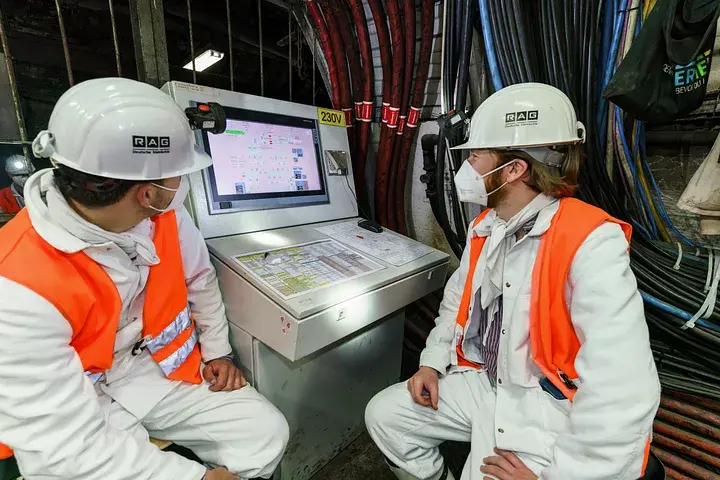Technische Grundlagen für die Einführung von generativer KI in Unternehmen

Lerne jetzt alle technischen Grundlagen, die du benötigst, wenn du generative KI in deinem Unternehmen einsetzen möchtest.
Einführung generative KI: Erfolgsfaktoren für Unternehmen

Viele Unternehmen müssen und wollen Erfahrung mit generativer KI sammeln. Eine Einführung von generativer KI steht deshalb bei vielen Unternehmen auf der Roadmap. In diesem Blogartikel soll es darum gehen, wie man unternehmensinternes Know-How erfolgreich mit generativer KI – in einem sicheren und DSGVO-konformen Rahmen – kombinieren kann und worauf zu achten ist. Die Einführung generativer KI ist nämlich nicht so komplex, wie es zunächst scheint.
R-Biopharm’s Effizienzsteigerung im Wissensmanagement: Wie junge Unternehmen & Mittelstand Hand in Hand arbeiten

Lesen Sie, wie R-Biopharm amberSearch erfolgreich einsetzt, um sich digital zu transformieren.
Was sind unstrukturierte Daten? — Formen von Daten erklärt

Daten sind ein wesentlicher Bestandteil der modernen Gesellschaft, insbesondere für Unternehmen und ihre Mitarbeiter, da sie es uns ermöglichen, fundierte Entscheidungen zu treffen, komplexe Systeme zu verstehen und aus der Vergangenheit zu lernen. Es gibt viele verschiedene Formen von Daten, jede mit ihren eigenen einzigartigen Eigenschaften und Verwendungszwecken.
Lernen vom Internet — Wie KI die unternehmensinterne Suche vereinfacht

Suchmaschinen im Internet gibt es schon lange. 1998 wurde das Konzept hinter Google von Absolventen der Stanford University vorgestellt. Heute gibt es neben Platzhirsch Google noch weitere Anbieter wie Bing oder DuckDuckGo. Ohne sie wäre das Internet für die meisten Menschen wohl ein undurchdringlicher Dschungel.
Wie sieht die Zukunft des Informationsmanagements aus?

Am 3. November hat unser Mitgründer und Co-Founder Bastian Maiworm auf dem Digital FUTUREcongress in Essen eine Keynote zum Informationsmanagements der Zukunft gehalten.
Seine Sicht der Dinge:
Dadurch, dass die Daten exponentiell steigen und die Menge der Datensilos tendenziell zunimmt, wird es für den Mitarbeiter immer unübersichtlicher und schwieriger, schnell auf Informationen zuzugreifen. Daher wird es zukünftig eine übergeordnete Instanz geben, die dem Mitarbeiter zur richtigen Zeit die relevanten Informationen vorschlägt.
Effizienz steigern mit Unternehmenssuche: 12 Anwendungsfälle

Eine Enterprise Search ist eine interne Suchmaschine, die von Unternehmen genutzt wird, um ihren Mitarbeitern schnellen Zugriff auf wichtige Informationen und Daten zu ermöglichen. Sie durchsucht dabei verschiedene Datenquellen innerhalb eines Unternehmens, wie z.B. Dokumentenmanagement-Systeme, Kunden- und Mitarbeiterdatenbanken und Projektmanagement-Tools.
Datenanalyse Kohlebergbau: Historische Daten für Zukunft nutzen

Suchmaschinen wie Google und andere zeigen den Weg: Geben Sie Stichworte oder eine kurze Frage ein, und schon haben Sie das gewünschte Ergebnis. Das Projekt „KISS42“ verspricht für die RAG die Antwort auf alle betrieblichen Fragen. In Zusammenarbeit mit einem interdisziplinären RAG-Team entwickelte das Aachener Start-up amberSearch die intelligente Suchmaschine amberSearch – zugeschnitten auf die spezifischen Daten und Anforderungen des Unternehmens. Sie hilft nicht nur, die Recherche in den Dokumenten der RAG für die Mitarbeiter effizient zu gestalten, sondern vor allem, das archivierte Wissen aus 150 Jahren Steinkohlebergbau für aktuelle betriebliche Aufgaben nutzbar zu machen.